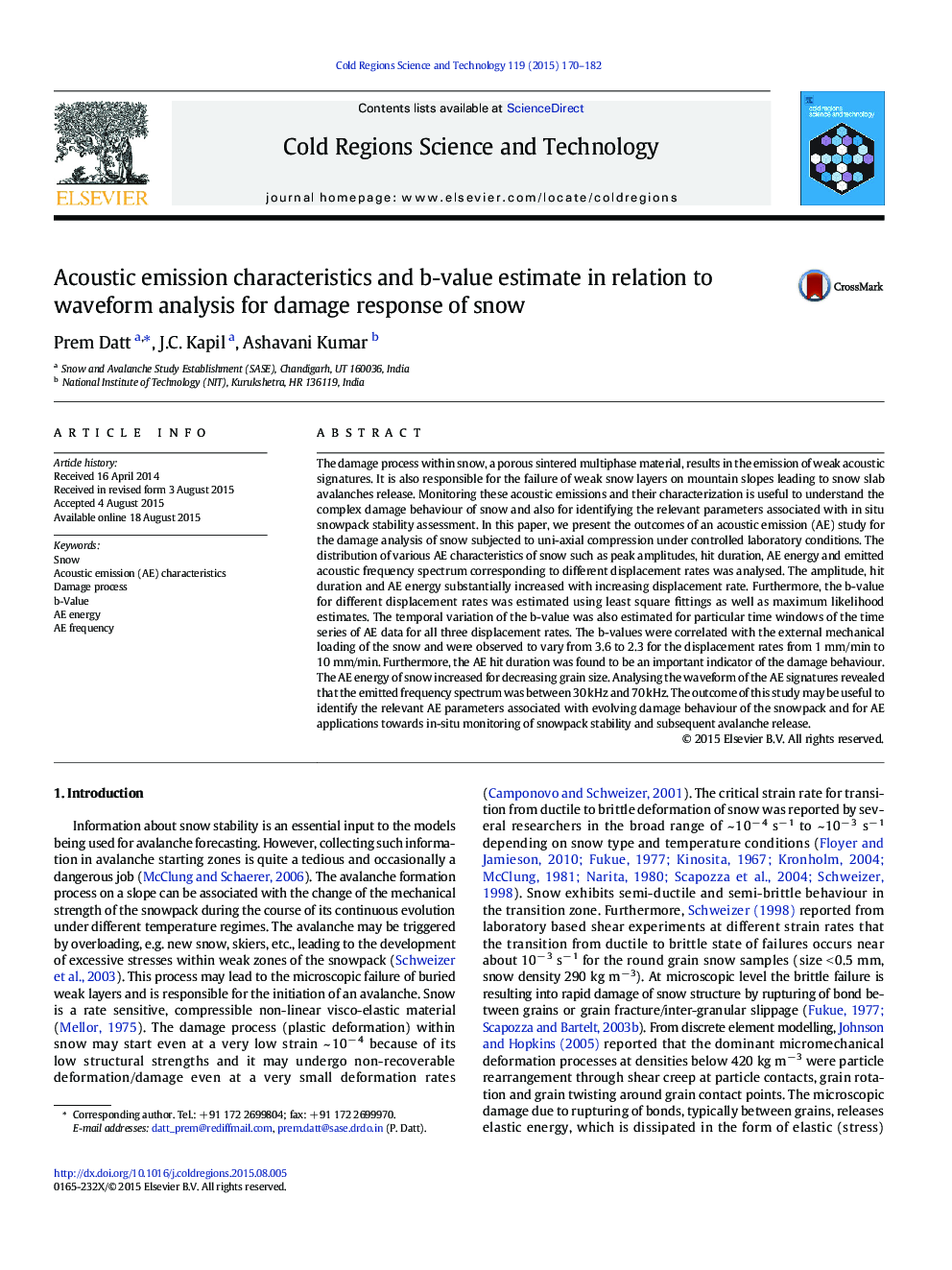| Article ID | Journal | Published Year | Pages | File Type |
|---|---|---|---|---|
| 6426762 | Cold Regions Science and Technology | 2015 | 13 Pages |
â¢Acoustic emission (AE) response of snow under mechanical deformation/damageâ¢Analysed various AE characteristics vis-a-vis snow damage processâ¢b-Value estimation from amplitude distribution using GR relationâ¢Frequency range optimization for operational AE-based snowpack stability
The damage process within snow, a porous sintered multiphase material, results in the emission of weak acoustic signatures. It is also responsible for the failure of weak snow layers on mountain slopes leading to snow slab avalanches release. Monitoring these acoustic emissions and their characterization is useful to understand the complex damage behaviour of snow and also for identifying the relevant parameters associated with in situ snowpack stability assessment. In this paper, we present the outcomes of an acoustic emission (AE) study for the damage analysis of snow subjected to uni-axial compression under controlled laboratory conditions. The distribution of various AE characteristics of snow such as peak amplitudes, hit duration, AE energy and emitted acoustic frequency spectrum corresponding to different displacement rates was analysed. The amplitude, hit duration and AE energy substantially increased with increasing displacement rate. Furthermore, the b-value for different displacement rates was estimated using least square fittings as well as maximum likelihood estimates. The temporal variation of the b-value was also estimated for particular time windows of the time series of AE data for all three displacement rates. The b-values were correlated with the external mechanical loading of the snow and were observed to vary from 3.6 to 2.3 for the displacement rates from 1Â mm/min to 10Â mm/min. Furthermore, the AE hit duration was found to be an important indicator of the damage behaviour. The AE energy of snow increased for decreasing grain size. Analysing the waveform of the AE signatures revealed that the emitted frequency spectrum was between 30Â kHz and 70Â kHz. The outcome of this study may be useful to identify the relevant AE parameters associated with evolving damage behaviour of the snowpack and for AE applications towards in-situ monitoring of snowpack stability and subsequent avalanche release.
